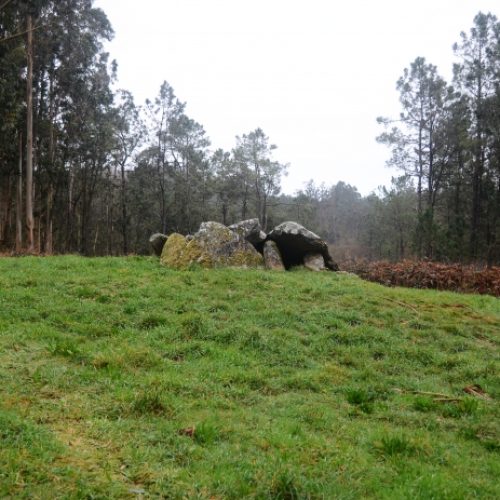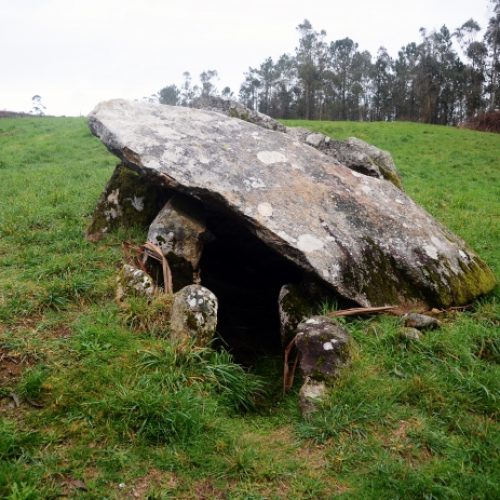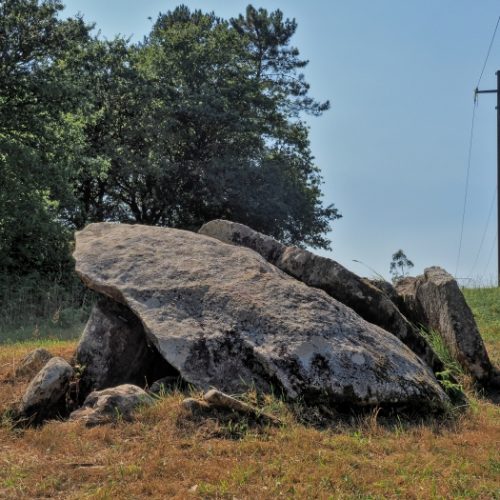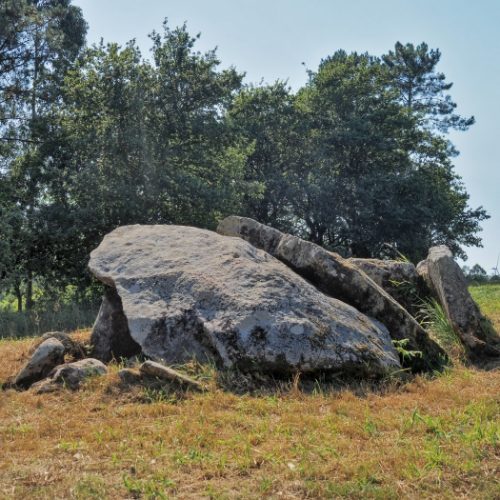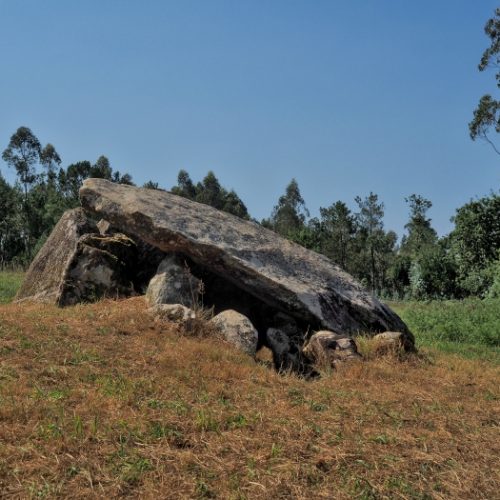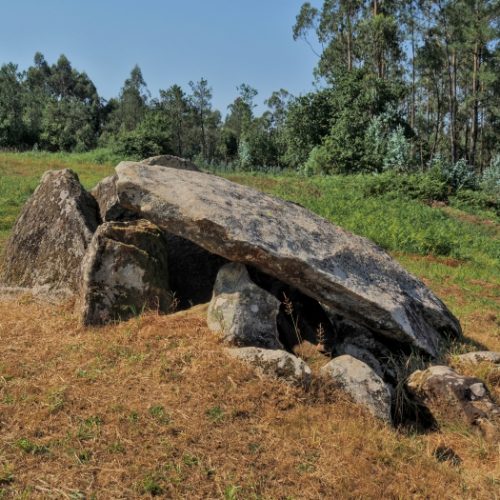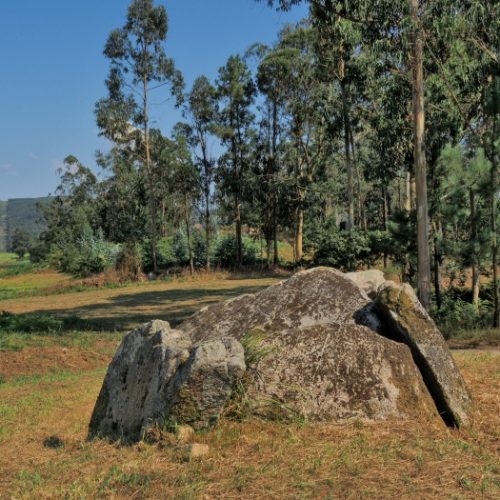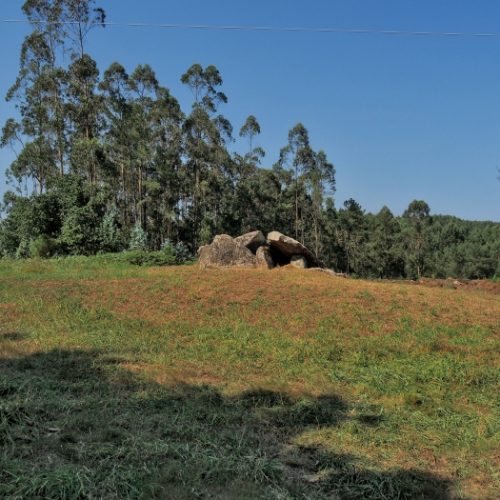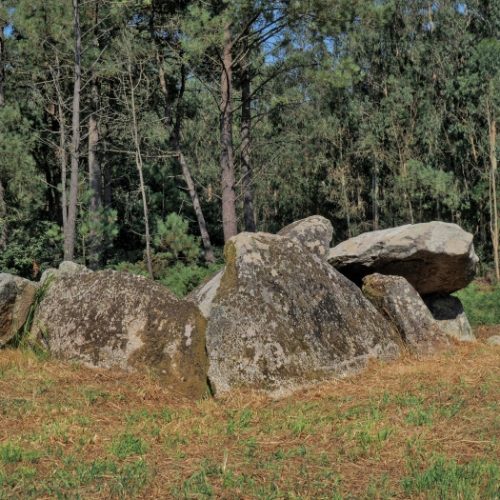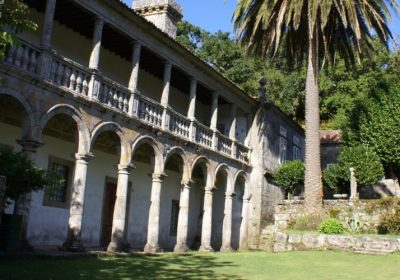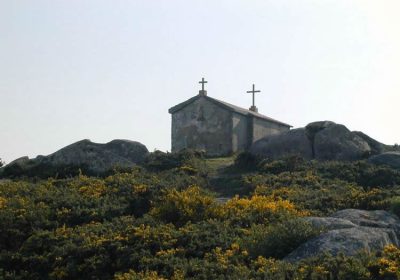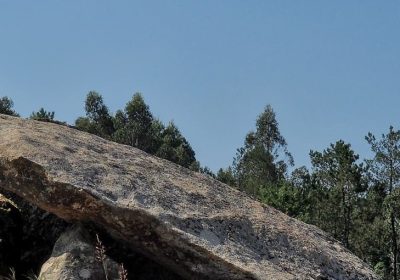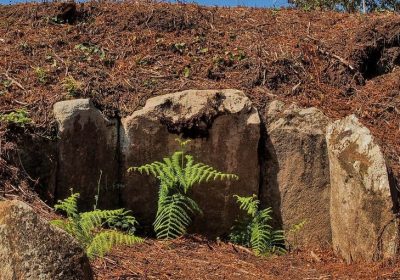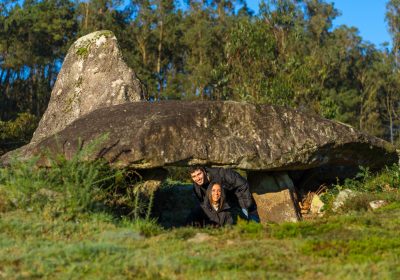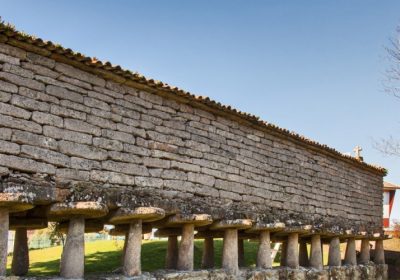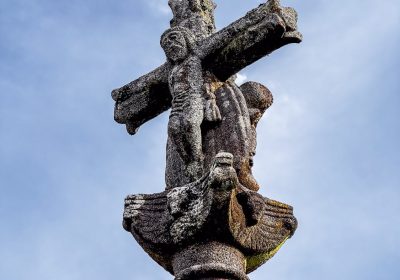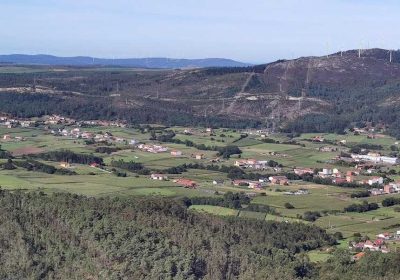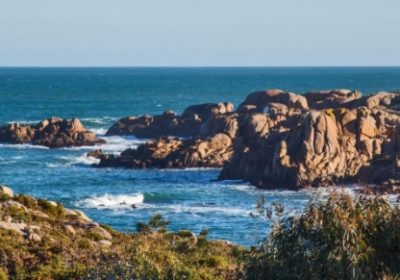The paintings of the Germans
Pedra Cuberta is one of the emblematic dolmens of Galicia due to the importance and quality of its findings.
It was studied and excavated by leading German archaeologists Georg and Vera Leisner in 1933. His pioneering work led to the discovery of an exceptionally well-preserved set of paintings, with geometric designs of wavy lines, concentric circles and triangles covering almost the entire interior of the monument. At that time, they were the first pictorial manifestations found in Galicia inside a megalith and one of the first in all of Europe.
The motifs are painted on a white layer of kaolin that covers the inside of the slabs, regularizing their surface. On this the different designs were then made in red and black paint. The pigments were obtained from clays rich in iron oxides and charcoals respectively and then mixed with water and a binder that facilitated the adhesion of the paint to the walls. According to the Leisners, microchemical analyses revealed that egg white was used as a binder in Pedra Cuberta.
Currently, the paintings are barely visible because they are covered with moss and sediment, but they are still in a relatively good state of preservation, so it is very important not to touch the inner surface of the dolmen.
The original structure did not come down to us complete because ten years before the discovery of the Leisners, someone had dynamited it and part of its slabs were displaced. In fact, there is still a hole in one of the stones, the result of the stonework. However, it retains many of its original elements, such as a large part of the earth mound and the stones of the chamber and corridor.

